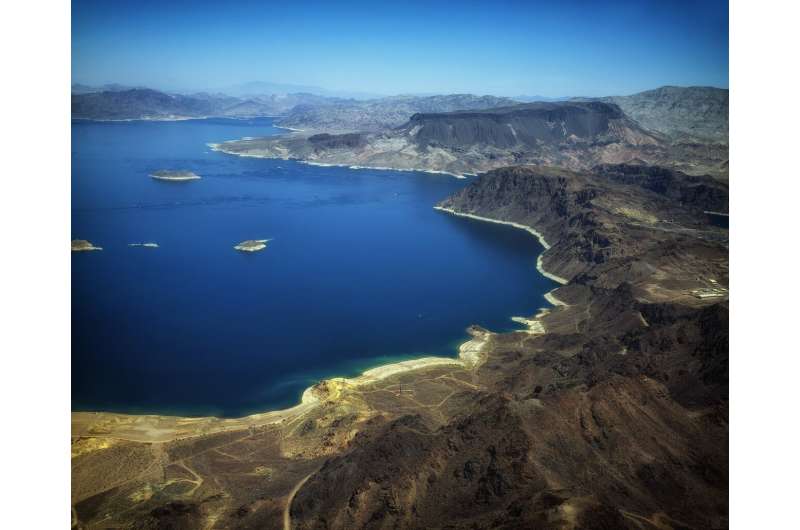This article has been reviewed according to Science X's editorial process and policies. Editors have highlighted the following attributes while ensuring the content's credibility:
fact-checked
reputable news agency
proofread
Officials brace for 'uncertainty' in water transfers to Lake Mead

Key backup tubes inside the Glen Canyon Dam might be damaged, potentially threatening the delivery of water to Lake Mead in the future if water levels ever dip too low in Lake Powell, according to a Bureau of Reclamation memo.
Below 3,490 feet, water releases from Lake Powell are wholly dependent on "river outlet works," which water managers now feel are not functional and could threaten the water supply downstream.
Currently, the reservoir sits at 3,558 feet, and the latest two-year projection places water levels above 3,560 feet until at least February 2026.
Looming threats of climate change and evaporative losses also are complicating state negotiations for how to allocate the shrinking Colorado River. Those talks are still at an impasse between the Lower Basin and Upper Basin states. The Bureau of Reclamation oversees river negotiations and operates government dams in the West.
"Given the current uncertainty associated with long-term performance ... it is recommended that Reclamation not rely on the river outlet works as the sole means for releasing water from Glen Canyon Dam," the memo reads.
More than 30 million people in Nevada, California and Arizona depend on flows from Lake Powell to fill Lake Mead, meaning the need to address engineering flaws at the dam is pressing. While water managers investigate the damage, they will temporarily reduce flows out of these four tubes, according to the memo.
Solutions in short supply
At a hearing explaining the Lower Basin states' proposal for river distribution in early March, former Reclamation Commissioner Brenda Burman said the agency would work to find engineering solutions to the dam's problems. Burman now works for the Central Arizona Project, which helps manage water resources across the state.
"They have some unknown issues about how these river outlet works would perform," Burman said at the meeting. "That's very difficult, new information to hear."
Activists like Kyle Roerink, executive director of Great Basin Water Network, have long been concerned about the dam and how it was designed. Many have called for the dam to be decommissioned, though no formal plan has gained traction.
Roerink said he was surprised that the Bureau of Reclamation didn't address the dam's engineering issues in environmental impact statements prepared about the management of Lake Mead and Lake Powell.
The flaws in the design are something he expects to complicate river negotiations and the future availability of water to Lower Basin states like Nevada, he said.
"This is just another wake-up call in a litany of wake-up calls that we've had in recent years," Roerink said.
2024 Las Vegas Review-Journal. Distributed by Tribune Content Agency, LLC.




















